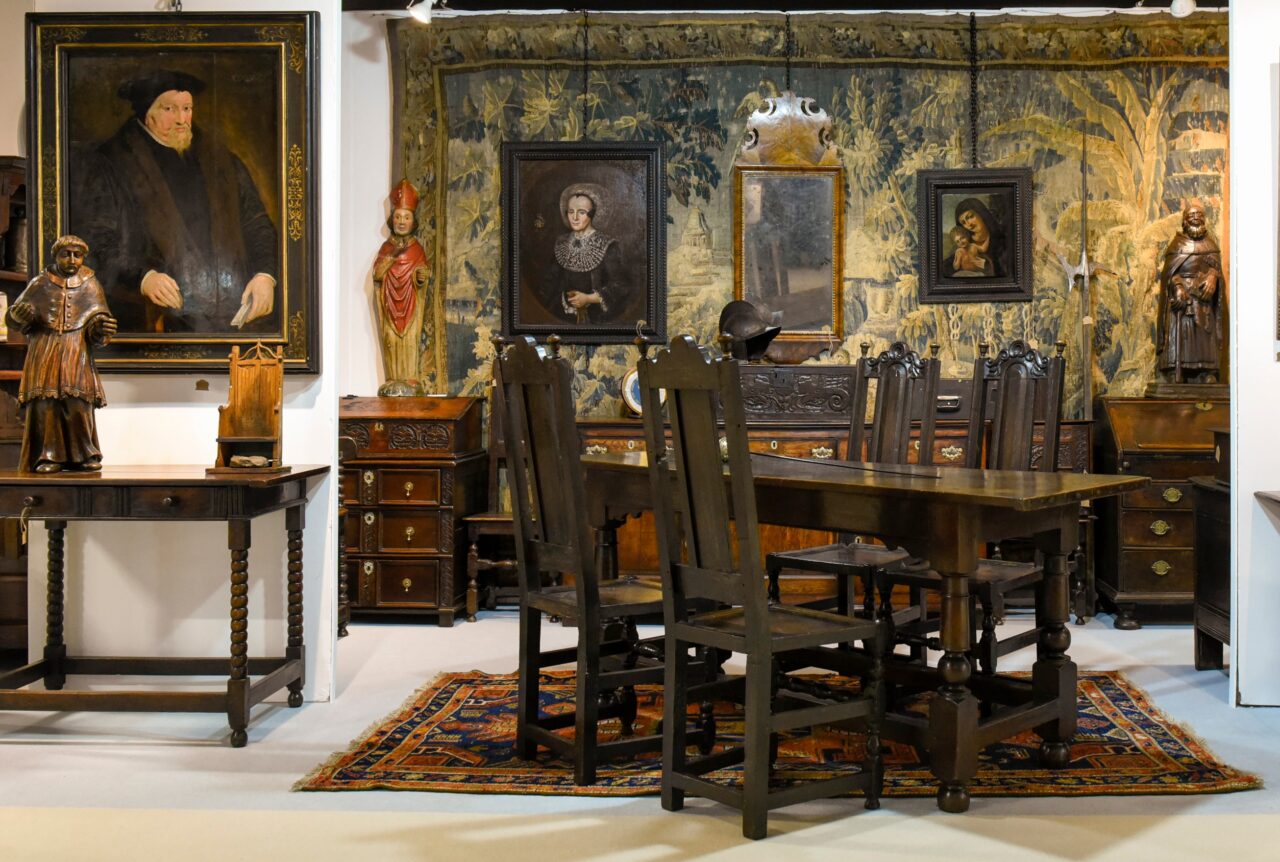Mary Claire Boyd, Fair Director of the Summer Art & Antiques Fair, passes on essential advice for investing in antiques.
Investing in antiques can be rewarding and educational, but don’t expect an instant profit! Antiques are a medium- to long-term investment, but you will certainly enjoy living with them, and not many assets can make that claim. All antiques dealers will say, rightly, to buy what you love. But you can certainly follow a few rules to increase your chances of profitability. It is a case of using your head and your heart for decision-making.
For anyone, making their first purchase is daunting and fraught with doubt but there are things you can do to protect yourself. The UK art and antiques world has two key trade associations, BADA and LAPADA. Buying from a dealer who is a member of one of one of these will greatly increase your chances of owning something with good provenance.
Similarly, major London fairs like Olympia have a strict ‘vetting’ policy to help visitors. This means that before the fair opens to the public, a team of over 100 experts have checked every single piece to check that is genuine and with correct labelling. Most experts encourage a little research before you head off on a buying spree to help the experience, although one of the advantages of buying from dealers rather than at auction is tapping into the incredible depth of knowledge. Fairs often have a highly regarded lecture programme, with excellent speakers, which are worth booking onto – many are free.
Word of Mouth
Word of mouth is one of the best sources when buying an investment piece. Speak with friends and family members who may have recently bought pieces you like, either as an investment or for pleasure, and see who they bought from and their opinion on them.
When buying antiques as an investment, a general rule should always be that it is in good condition. Don’t choose any piece that is damaged or that has been tampered with. General wear-and-tear is normal, and can add to the character of a piece. A good restorer can do amazing repairs, but some damage is simply beyond repair and will greatly reduce the value – something you will often see on TV antiques programmes such as the BBC’s Antiques Roadshow.
Jewellery might not be the first category that comes to mind when you’re considering an investment purchase, but beautiful vintage and antique pieces can see a good return over the years. When investing in antique jewellery you should be looking at pieces that are not mass-produced, so are either one-off, or made only in a very small number. Jewellery sales at the Winter Art & Antiques Fair in November 2022 were very strong indeed, indicating that people are looking to invest in this area in uncertain times.
It should be signed jewellery if possible – produced by a known jewellery house such as Cartier or Van Cleef & Arpels. Signed antique or vintage jewellery will always keep its value, and will only appreciate in value as it is much harder to find. If buying single stones, always buy them with a certificate if possible. Older stones may not have one, but there will be other ways to check authenticity.
Provenance
With any antiques, provenance is important, ask for and keep any paperwork alluding to it, an important factor in valuing antiques. The dealer may have done considerable research into a piece in order to sell it.
When looking at art, consider the age of the artist, if still alive. Is there a major exhibition in a commercial gallery planned, or a book written? These will affect the price of the work.
Clocks are often seen as a good investment, because they are not subject to Capital Gains Tax. Carriage clocks come in a multitude of styles and can fit easily into a small house or apartment. Likewise ceramics can fit easily into a space, and are also very collectable, but do need careful looking after. On this subject, ensure paintings are not hung in direct sunlight, and furniture not stored in damp conditions.
The old adage, ‘buy the best you can afford’ holds very true in this trade. One good work by an artist is better than four lesser ones. But conversely, a well built up collection is worth more than the sum of the individual parts. Apply business filters as you would other assets, but number one requirement for an antique investment is that you must love it!
SEE ALSO: Art Management – The Art of Managing Art














